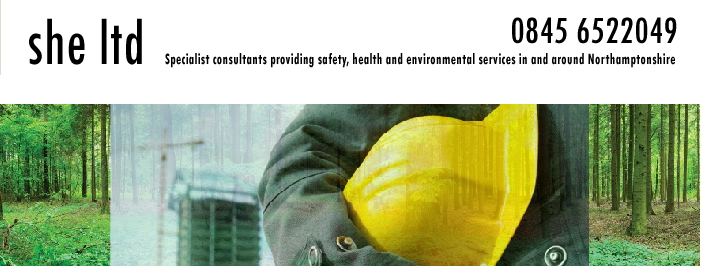Welcome to this month's safety health and Environmental newsletter. The idea of these newsletters is to raise awareness and to get you involved. This month’s topics are about Slips, Trips and Falls, and Electronic Retailer’s Environmental Regulations.
Slips, Trips, and Falls
Slips and trips are the highest cause of injury in retail, in 2005/06 there were 1012 major injuries reported to the HSE. Half of those accidents happened in supermarkets and food stores. Sales assistants were found to be most at risk.
Why are they important?
Most slips occur in wet or contaminated conditions and most trips are due to poor housekeeping. The solutions are often simple and cost effective, a suitable assessment of the risks should identify the necessary controls and these should include (in no particular order):
- prevention of contamination
- management of spillages and cleaning regimes
- effective matting systems
- choice of suitable footwear
- design of workplace and work activities
- maintenance of plant and the work environment
- specification of appropriate flooring
- housekeeping
- effective training and supervision
Did you know?
Slips and trips are the most common cause of major injuries at work and can happen almost anywhere. 95% of major slips result in broken bones and they can also be the initial cause for a range of other types of accident such as a fall from height.
Slips and trips are responsible for, on average:
- over a third of all reported major injuries
- 20% of over-3-day injuries to employees
- 2 fatalities per year
- 50% of all reported accidents to members of the public that happen in workplaces
- cost to employers £512 million per year (lost production and other costs)
- cost to health service £133 million per year
- incalculable human cost
- more major injuries in manufacturing and in the service sectors than any other cause.
The biggest barriers to putting the problems right include:
- People not taking the risks seriously.
- Little understanding of the causes of slipping.
- Thinking that slips and trips are inevitable.
- Poor application of risk assessment and management controls.
But simple cost effective measures can reduce these accidents!
The HSE has a variety of resources on how to prevent the causes of Slip, Trips, and Falls, and can be found following the link bellow:
http://www.hse.gov.uk/slips/causes.htm
WEEE Regulations
The Waste Electrical and Electronic Equipment (WEEE) Directive aims to reduce the amount of WEEE being produced and encourages everyone to reuse, recycle and recover it. The Waste Electrical and Electronic Regulations (WEEE Regulations) affect retailers and other distributors who sell electrical and electronic equipment (EEE). If they're selling EEE to the public, retailers will have to ensure that their customers can return their WEEE free of charge. This will be on a one-for-one basis, as long as the new equipment is of a similar type and has the same function as the old equipment. The Vehicle Certification Agency (VCA) is responsible for ensuring that retailers and distributors of electrical equipment play their part in helping household users to dispose of WEEE at the end of a product's life. It’s the job of the Environment Agency to ensure that this is maintained smoothly.
Retail and Householders
Private householders can (but don't have to) return their WEEE to retailers who offer in-store takeback. Retailers are able to set up alternative collection systems as long as they are still convenient for customers.
The WEEE regulations allow a Distributor Takeback Scheme to be created, as an alternative to in-store take back for retailers and other distributors who have joined. This alternative network is largely based on the existing network of local authority civic amenity sites.
Valpak Retail WEEE Services has been appointed to operate the Distributor Takeback Scheme. Retailers and other distributors that join are required to contribute to a fund that pays local authorities to upgrade civic amenity sites put forward as Designated Collection Facilities.
These retailers don't have to offer in-store take back of WEEE but can direct consumers to the nearest Designated Collection Facility.
Retailers also have to ask producers of EEE for their unique producer number when they supply EEE. This number proves that the producer has joined an approved compliance scheme and is helping fund the treatment and recycling of separately collected household WEEE.
Retailers may agree with producers to show consumers a ‘visible fee’ for treating and recycling certain types of products at end of their life. The WEEE regulations and guidance set out the restrictions that apply to these fees.
The environment agency has a variety of resources you can use to the best effect on these regulations. Please follow the link bellow:
http://www.environment-agency.gov.uk/business/topics/waste/32084.aspx




No comments:
Post a Comment